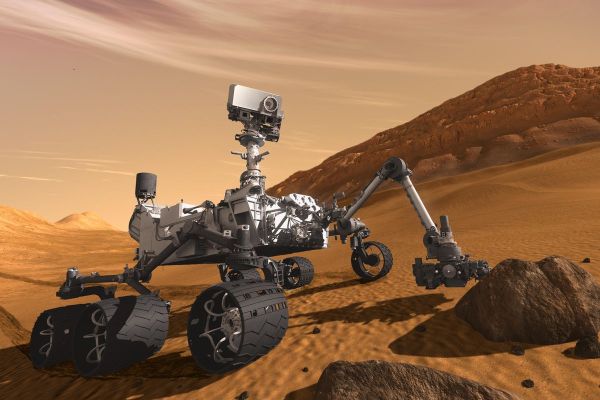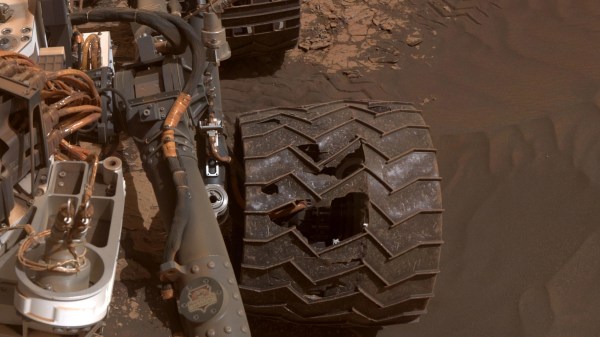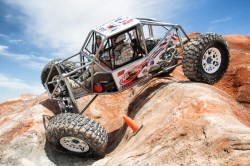Although the Curiosity rover has been well out of the reach of human hands since it touched down on Mars’ surface in 2012, this doesn’t mean that it isn’t getting constant upgrades. Via its communication link with Earth it receives regular firmware updates, with the most recent one being the largest one since 2016. In addition to code clean-up and small tweaks to message formats, this new change should make Curiosity both smarter and have its wheels last longer.
The former helps to avoid the long idle times between navigating, as unlike its younger sibling, Curiosity does not have the dedicated navigation computer for more autonomous driving. Although it won’t make the 11-year old rover as nimble as its sibling, it should shorten these pauses and allow for more navigating and science to be done. Finally, the change to reduce wear on the wheels is fairly simple, but should be rather effective: this affects the amount of steering that Curiosity needs to do while driving in an arc.
With these changes in place, Curiosity should be all ready to receive its newest sibling as it arrives in a few years along with even more Mars helicopters.














